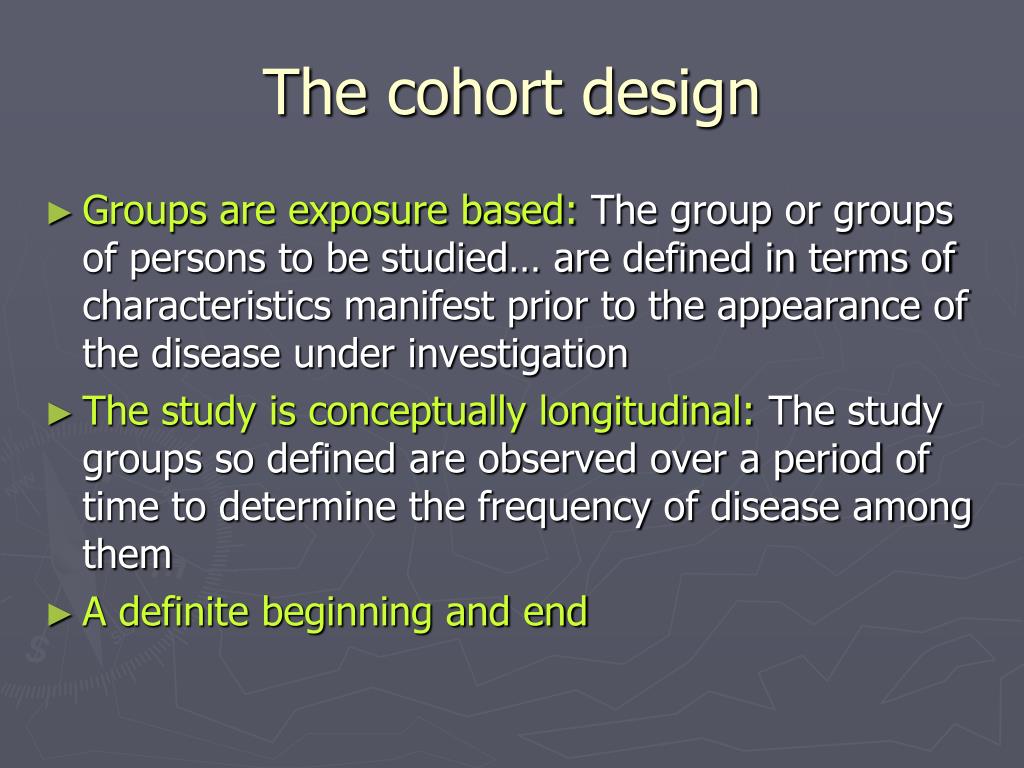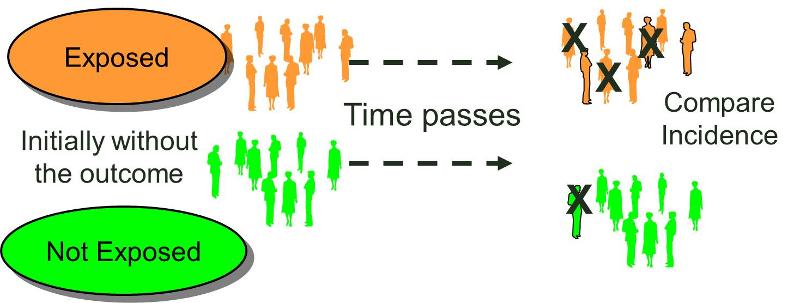Lesson 9: Etiologic Studies 3 Cohort Study Design; Sample Size and Power Considerations
Table Of Content

A study on the impact of smoking, for example, might reveal links with multiple types of disease. Researchers can also assess how risky a factor is in comparison with others. They are also called longitudinal studies because they follow groups of people over time. Results from cohort studies can help people understand human health and the environmental and social factors that influence it. The researchers collect data on the subjects’ exposure to certain risk factors or interventions and then track the outcomes.
Provide extensive data
It is important that we include only patients with permanent addresses in the area for long-term cohort studies. Details about the stay (permanent address, temporary address, and duration of residence in the current address) should be a part of the inclusion criteria. Studied the effects of diet, exercise, and medications on the development of hypertensive or arteriosclerotic cardiovascular disease, in a longitudinal population-based cohort.
Framingham Heart Study
Retrospective studies, though, tend to be cheaper and quicker than prospective studies as the data already exists. Cohort studies also allow researchers to conduct studies that would otherwise be unethical. For example, an experiment where researchers deliberately expose participants to cigarette smoke would be unethical. A cohort study allows scientists to study people who have chosen to smoke on their own. Scientists call factors such as this “confounding” because they can potentially make the results of a cohort study inaccurate or biased.
Study Design 101: Cohort Study
Sometimes a standardized effect size is given, i.e., the effect size divided by the standard deviation. If power is calculated in this manner, the standardized effect size is usually between 0.1 and 0.5, with 0.5 meaning \(H_1\) is 0.5 standard deviations away from \(H_0\). \(\alpha\) is the level of significance, the probability of a Type I error. This is usually 5% or 1%, meaning the investigator is willing to accept this level of risk of declaring the null hypothesis false when it is actually true.
The Nurses’ Health Study
Prospective studies usually require multiple months or years before researchers can identify a disease’s causes or discover significant results. Participants are enrolled in the study before they develop the outcome or disease in question and then are observed as it evolves to see who develops the outcome and who does not. The investigator should prioritize data management in these studies. The data entry program should be installed at the start of the project. In addition, data entry and cleaning should be done as soon as data are collected. This will help us to identify the lacunae in the existing data, loss of follow-ups, and missing data points.
In a cohort study, participants who do not have the outcome at baseline are followed over time to estimate the incidence of the outcome. In this type of design, the temporality between the exposure and outcome is well defined. The studies may be prospective, retrospective, or a mixture of both. Losses during follow-up are an important source of bias in cohort studies; thus, measures to ensure follow-up of participants should be included in the design of a prospective cohort study. Advanced modeling techniques are useful to analyze longitudinal data and are preferred in cohort studies. It is defined as the number of participants who develop the outcome of interest (heart disease and stroke) divided by the person-time (days, months, years) at risk during follow-up (Alexander, 2015).
\(\alpha\),\(\beta\), effect size, variability, (baseline incidence), n
There is also a dependence upon the rate of the outcome, but in general, case-control studies involve less sampling. Sample sizes for cohort studies depend upon the rate of the outcome, not the prevalence of exposure. Sample size for case-control studies is dependent upon prevalence of exposure, not the rate of outcome. Because the rate of outcome is usually smaller than the prevalence of the exposure, cohort studies typically require larger sample sizes to have the same power as a case-control study.
She is currently studying for a Master's Degree in Counseling for Mental Health and Wellness in September 2023. They can be more time-consuming than other options, such as cross-sectional or case-control studies. Since then, researchers from the U.K.’s Centre for Longitudinal Studies have launched more studies with new large groups of babies.

Polypharmacy, hospitalization, and mortality risk: a nationwide cohort study Scientific Reports - Nature.com
Polypharmacy, hospitalization, and mortality risk: a nationwide cohort study Scientific Reports.
Posted: Tue, 03 Nov 2020 08:00:00 GMT [source]
To provide an accessible link to this technical literature, we give a conceptual overview of case-cohort study analysis with inverse probability of sampling weights. We show how this general analytic approach can be leveraged to more efficiently study subgroups of interest or disease subtypes, or to examine associations independent of case status. A brief discussion of how this framework could be extended to incorporate other related methodologic applications further demonstrates the broad cost-effectiveness and adaptability of case-cohort methods for a variety of modern epidemiologic applications in resource-limited settings. This paper continues the series on the observational study designs, focusing on the cohort design.
If insufficient numbers of subjects are to be enrolled for the study to have a reasonable chance of finding a statistically significant difference, should the investigator receive funds from the granting agency? The FDA, NIH, NCI, and most other funding agencies are concerned about sample size and power in the studies they support and do not consider funding studies that would waste limited resources. Despite what we see as clear arguments in favor of case-cohort over nested case-control designs, the reality is that many previous investigations of this type have already been sampled and analyzed as nested case-control studies. This can lead to issues of compatibility between the two, whether comparing effect estimates informally or formally (i.e. meta-analysis), or attempting to pool data for combined analysis.
None of the included participants had psoriasis or depression at baseline. The outcome of interest was the initiation of antidepressants or hospitalization for depression. The authors compared the incidence rates of hospitalization for depression in psoriasis and reference population. The psoriasis group was further classified as mild and moderate psoriasis. The authors found that psoriasis was an independent risk factor for new-onset depression in young people. However, in the elderly, it was mediated through comorbid conditions.
Specifically, we focus on how case-cohort designs can be understood within a general sampling framework where approaches like inverse probability weighting can be used to re-weight the study sample to represent a cohort study. For the applied researcher, these recent conceptual and software advances imply that case-cohort designs can be utilized and adapted to efficiently and flexibly address a broader array of study questions than may be currently appreciated. An advantage of prospective cohort studies is that all relevant variables can be thought ofin advance, and data related to these variables can be accurately measured and recorded bytrained study staff. Disadvantages are that prospective cohort studies are expensive toconduct and take long to complete; in fact, the investigators who analyze the data may bethe successors of those who started the study.
For a retrospective cohort study, researchers analyze a group of people who already have certain characteristics. For example, they might look at a group of older adults with heart disease. Then they would analyze data about the group members’ medical history to see what factors could have contributed. To carry out prospective cohort studies, scientists identify a group of people to study and plan the research in advance, collecting data over time. In retrospective cohort studies, scientists use data that are already available for a particular group.
Comments
Post a Comment